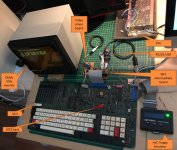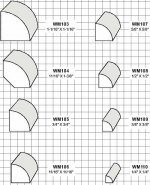tipc
Banned
The 1980s China/Taiwan tools were a mixed blessing. Sometimes the iron was too soft and tapped holes would strip out. I guess that doesn't mean everything. Japanese exports were often awful from the getgo. Now Japanese stuff is crazy good.
HF charges as much as your brand named chinese export. And speaking generally about their tools, I'll pass. I've bought cheapo wrench sets 10-15 years ago to keep in the car for an emergency say. But then they were cheap. I've bought (I think) Indian made dollar store wrenches and had them around for years. But my tools get used 3x a year. You can luck out. I bought a Husky wrench set, 44 pieces, and some big sizes recently. Made in India. I decided that since I've gotten by w/o those big sizes into my 53 year, I likely will never use them. So I got my 50$ back. Love Husky
If you're options are very limited you can make do with a Horror Freight lathe or mill. Plan on spending a week or weeks dismantling and cleaning it. Oi vay.
HF charges as much as your brand named chinese export. And speaking generally about their tools, I'll pass. I've bought cheapo wrench sets 10-15 years ago to keep in the car for an emergency say. But then they were cheap. I've bought (I think) Indian made dollar store wrenches and had them around for years. But my tools get used 3x a year. You can luck out. I bought a Husky wrench set, 44 pieces, and some big sizes recently. Made in India. I decided that since I've gotten by w/o those big sizes into my 53 year, I likely will never use them. So I got my 50$ back. Love Husky
If you're options are very limited you can make do with a Horror Freight lathe or mill. Plan on spending a week or weeks dismantling and cleaning it. Oi vay.


